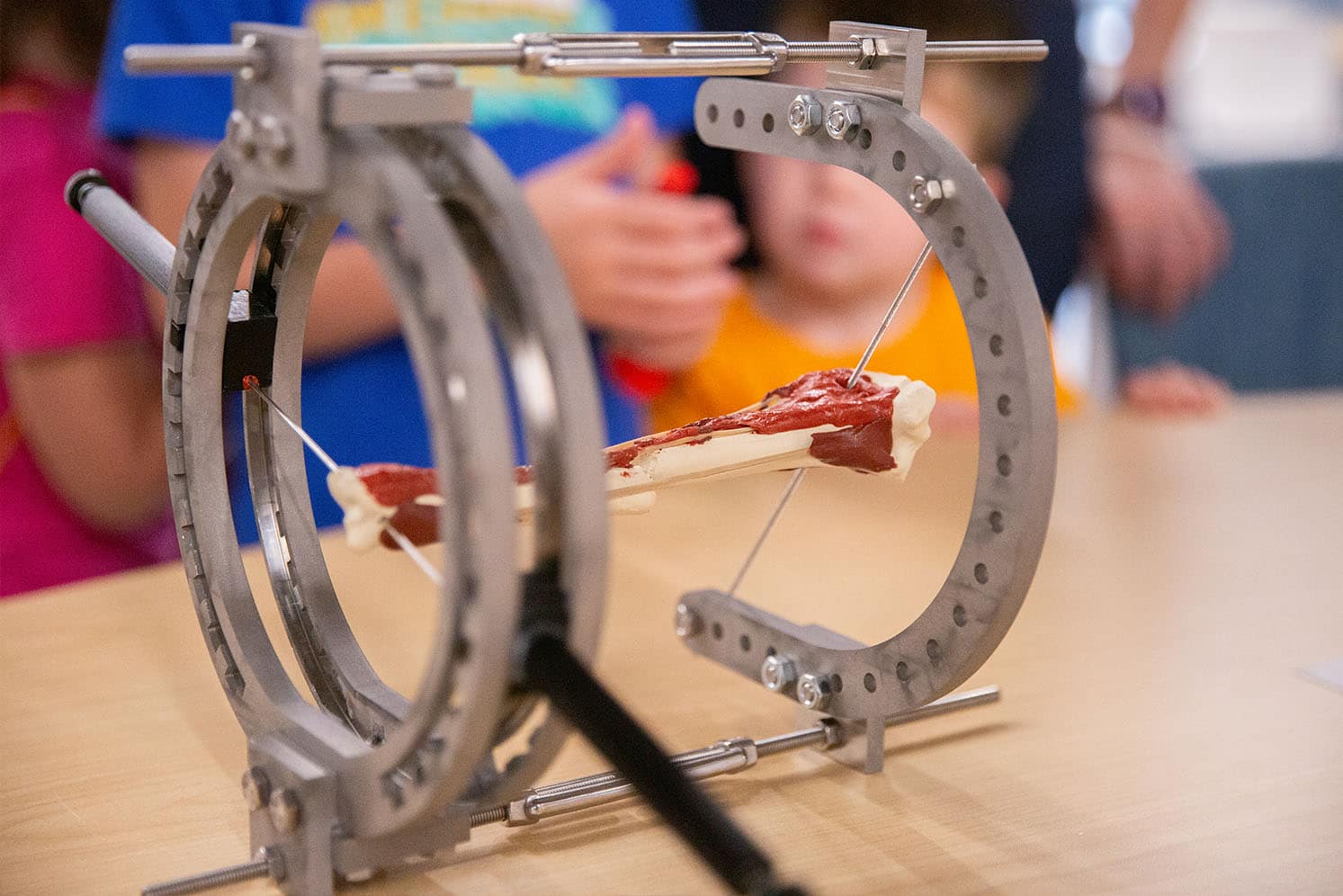What is
Biomedical Engineering
Biomedical engineering is an interdisciplinary field that applies principles of engineering and design to medicine and biology. Our students apply engineering principles to develop technologies that improve healthcare outcomes. This includes designing medical devices, developing biomaterials, creating diagnostic tools, and more. The curriculum combines rigorous engineering coursework with studies in biology, chemistry, and physiology, preparing students to tackle complex challenges in the healthcare industry.
Why Study
Biomedical Engineering
Studying biomedical engineering at UT means gaining access to top-tier faculty, hands-on lab and research experiences, and close collaboration with leading institutions like Oak Ridge National Laboratory and UT Medical Center. Our students benefit from cutting-edge research in areas like biomechanics, medical imaging, and regenerative medicine—plus opportunities to work on real healthcare challenges through senior design projects and industry partnerships. It’s the perfect place to launch a career at the intersection of engineering and human health.

Interdisciplinary Examples
Biomedical engineering work across disciplines on projects like creating sustainable medical tools, developing new diagnostics tools in medicine, creating materials needed for new medical ceramics and alloys, plus much more. Check out just a few of the ways that biomedical engineers work to benefit society.
Health & Medicine
Biomedical engineering plays a foundational role in advancing medical technology and healthcare delivery. It bridges engineering design with clinical practice to produce life-saving devices such as artificial organs, pacemakers, imaging systems, and minimally invasive surgical tools. The field also enables the development of diagnostic technologies, biosensors, and wearable monitors that support early disease detection, real-time health tracking, and precision medicine.

Environment & Sustainability
The healthcare industry presents unique environmental challenges, and biomedical engineering addresses them through the design of sustainable materials, energy-efficient devices, and environmentally conscious manufacturing processes. Innovations such as biodegradable implants, recyclable single-use medical tools, and sustainable packaging for pharmaceuticals support greener healthcare practices and reduce biomedical waste.

Materials Science & Engineering
The integration of biomedical and materials science engineering is essential for the creation of advanced biomaterials and medical technologies like bioactive ceramics for dental and orthopedic applications, shape-memory alloys for stents, and polymeric scaffolds used in tissue engineering. Smart materials that respond to biological stimuli and materials engineered at the nanoscale for targeted drug delivery also exemplify the deep connection between these fields.

Industrial Engineering
Biomedical engineering intersects with industrial engineering in the optimization of healthcare systems, medical device manufacturing, and human-centered design. This partnership enhances hospital workflows, improves patient safety and outcomes through process control, and ensures that devices are ergonomic and user-friendly. The use of quality control methods, risk analysis, and systems optimization ensures efficiency and regulatory compliance across the biomedical industry.



Career
Outlook
Biomedical engineering is a fast-growing, high-impact field working to improve patient care and health technologies. Biomedical engineers work in industries like medical devices, biotech, healthcare, and research, taking on roles in product development, testing, innovation, and more.
- Starting Median Salary: $78,600*
- Mid-career Median Salary: $115,300**
- Number of Jobs: 21,200***

*These figures include the median salary of engineers with 0-5 years of experience. The data comes from payscale.com, July 2025.
**These figures include the median salary of engineers with 10+ years of experience. The data comes from payscale.com, July 2025.
***These figures are based on the projected number of jobs for mechanical engineers in 2033 by the U.S. Bureau of Labor Statistics.
